‘Lord of Misrule’ Director William Brent Bell Is Actively Developing ‘Orphan 3’
- Oops!Something went wrong.Please try again later.
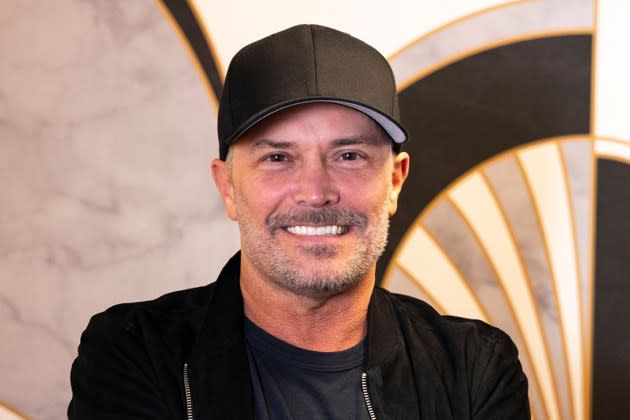
After Orphan: First Kill landed William Brent Bell the best reviews of his career, the genre filmmaker has kept the momentum going with another well received film in Lord of Misrule.
Bell has explored a variety of different horror subgenres throughout his career, and he can now cross folk horror off the list. Lord of Misrule chronicles a vicar named Rebecca Holland (Tuppence Middleton), whose daughter (Evie Templeton) goes missing during her quaint English village’s harvest festival. Rebecca then stops at nothing to find her missing child, and all roads lead her to Ralph Ineson’s Jocelyn Abney, who has a keen insight into the town’s disturbing folklore.
More from The Hollywood Reporter
Box Office: Timothée Chalamet's 'Wonka' Whips Up Sweet $3.5M in Previews
Hollywood Reporter Music Editor Picks the 10 Best Albums of 2023
Oddly enough, Ineson’s role was written to be a middle-aged woman, but Bell floated the idea of Ineson reinterpreting the character through performance, as opposed to rewriting.
“You wouldn’t know it by looking at him in the movie that there’s anything female about it,” Bell tells The Hollywood Reporter. “The writer, Tom de Ville, who’s so great and loves Ralph, was taken aback and said, ‘I’ve written this strong female character, so I have to rewrite the whole character.’ And I was like, ‘No, don’t change a thing. Let’s let Ralph do his interpretation of this character.’ So it was such an exciting shift in storytelling to allow him to play this character.”
In Orphan: First Kill, Bell took a huge gamble by having a then 23-year-old Isabelle Fuhrman reprise her Orphan (2009) role as Esther, who appears to be a nine-year-old child when she’s really much older. The roll of the dice paid off both critically and commercially despite a day-and-date release on Paramount+, and now Bell is actively developing a third chapter.
“We’re developing a third one now. The franchise’s rulebook has been opened up to where anything is possible,” Bell says. “And knowing where we are in the process already, I’m extremely excited about the twists and turns that we have in store.”
Below, during a recent conversation with THR, Bell also discusses how his mother played a key role in writing Lord of Misrule’s hymn that immediately gets stuck in the viewer’s head.
So you’ve tackled a number of different horror subgenres, from supernatural and psychological to werewolf and found footage. What made this the right time for folk horror?
It was really the script, and because I hadn’t tackled anything quite like this, it made the script jump out to me that much more. But when I was first given the script by James Tomlinson, my producing partner on the movie, he gave me a short direct note: “Read this. It’s good.” And he wouldn’t say that if he didn’t believe it. I’ve always believed in his taste and it didn’t take long for me to recognize that in the script. As a film fan, I was hooked pretty quickly on every level. So it just felt like the right time, and Tom de Ville’s script checked all the boxes.
Do you have any other subgenres you want to check off your bucket list?
Definitely. I’ve never really tackled vampires. I love science fiction, so we have a science fiction project coming up that’s still horror in the way that something like Alien or Ex Machina might be horror. It’s character driven and high concept enmeshed in something that feels like it could happen. I’m always surprised if I get a project that dips into a certain subgenre that I wasn’t expecting, but science fiction and something in the vampire world are two things I’ve never really touched on.
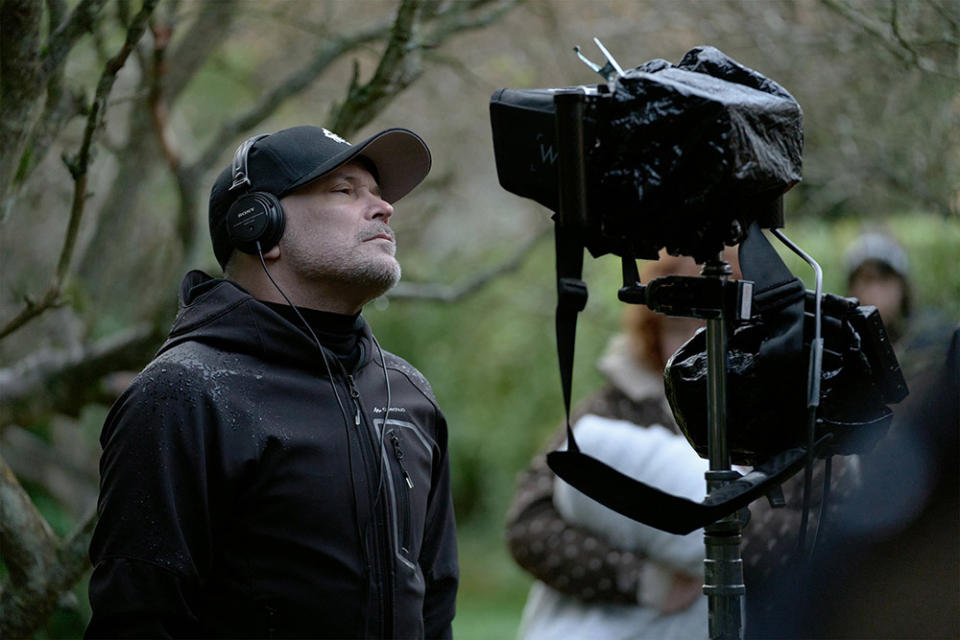
Lord of Misrule looks wildly different from Orphan: First Kill, and none of your films have an overly similar aesthetic, at least from what I can recall. And I say that because some filmmakers are very recognizable and patterned from movie to movie, while some go out of their way to feel like a different director on each film. Would you say you fall into the latter camp?
Whether or not I seem different as a director from film to film or people can recognize my movies, it’s not something I’m consciously choosing. A lot of times it’s what services the script. Doing something like found footage is never going to look like Lord of Misrule, which is this love letter to folk horror and autumn colors. So my instincts are always going to be the same. I like things to play out in camera. I like to try to be true to the characters. I have a certain aesthetic, color-wise, that usually comes through, but it’s more topical. There’s a magical realism. No matter what the movie is, when I look back at them, the through-line is creating movies that revolve around a much bigger concept but in a grounded way. And I wanted this movie to be beautiful, because it’s a very beautiful, haunting story. On other movies, we very much on purpose made them not pretty in a standard way. Even Orphan: First Kill was a very specific look, because we wanted to stay away from what the original film did and do something a little different that leaned into our version of the story.
Tarantino once said that Sam Jackson is the best special effect, and I also believe that Ralph Ineson’s voice belongs in that sentence. Did you know that Lord of Misrule was in good shape once you cast him?
Absolutely. I’ve worked with Ralph before [on Brahms: The Boy II], and we’ve remained friends. His voice isn’t something that’s put on; it’s just the way he sounds when he talks. So he’s just a great actor who happens to have that voice, which is undeniable. In this particular case, I knew I wanted him involved in the movie, and his character, Jocelyn, was written as a middle-aged woman. When I went to go meet him in London, I wanted to see what he thought of the script and if he saw a character that he might be interested in, and he chose a small character as a cameo. And then I asked him, “What if you played Jocelyn Abney?” And he was like, “Jocelyn is a woman.” And I was just like, “Well, it would be your interpretation.” So we both got really excited, and I actually still talk about that character as a woman. (Laughs.) I speak about her as her, but you wouldn’t know it by looking at him in the movie that there’s anything female about it. The writer, Tom de Ville, who’s so great and loves Ralph, was taken aback and said, “I’ve written this strong female character, so I have to rewrite the whole character.” And I was like, “No, don’t change a thing. Let’s let Ralph do his interpretation of this character.” So, yes, I knew I was in good hands with him, and it was such an exciting shift in storytelling to allow him to play this character.
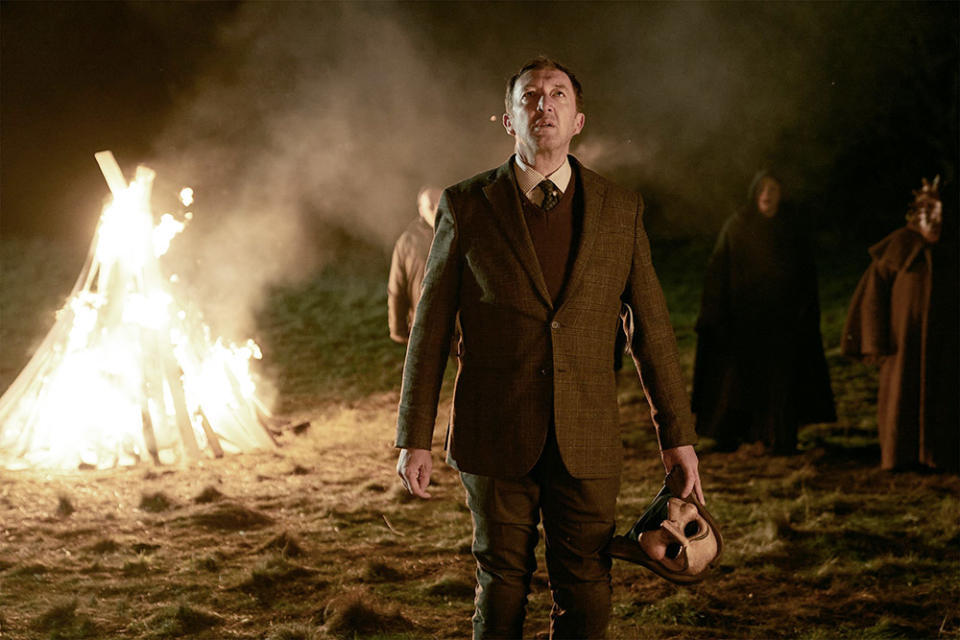
The breathing sound of another character in the black barn, was that Ralph as well?
Yeah, some of the ADR is with Ralph. You can’t not use Ralph when you have his voice. In the trailer, when his character speaks, it sounds almost like a trailer voice and what a great luxury that is. (Laughs.) So it was a bunch of everything. It was a lot of movie magic from [re-recording mixer] Craig Mann, who did the sound design. I’ve done six films with him. So it was a mix of a lot of things in that scene.
That oner in the living room was really cool, as it illustrates just how unhelpful helpfulness can be at times. How many takes did your cast need to land it just right?
That was probably my favorite thing to shoot. It was the first scene where we had the entire ensemble together. So a few of those people I had only met face-to-face that day, and I think they all expected the scene to be shot with normal coverage all day. I knew I wanted the scene to be about Rebecca [Tuppence Middleton] and unhelpfulness, to where everything they’re doing is kind of in the background. And this location lent itself to this great 360 shot. So we ended up doing five takes, and I think we used the second one, but it was pretty much perfect the first time. It was just getting the choreography right of when people would come in different doors and when the camera would move with them. So it injected this sense of excitement into the cast and crew very early on in the production, because when you finish a shot like that, we all want to clap. And from then forward, the actors knew that nothing was going to be as expected. It was about whatever works best for the scene, and that was an idea that we had five minutes before we shot it.
This movie has such a strong vibe to it. How much of that atmosphere was created on the day versus in post?
Post was really important, because the score from Brett Detar is so present and specific. Sam Lee’s voice in the two folk songs he did is really specific, authentic and traditional, but shooting on location was amazing. Aldbury village [in England] invited us to shoot there, and it was like walking into the script. Other than dressing some areas and coming up with ways to shoot it, we didn’t have to create anything. It was like being on the backlot of a movie studio, but the difference is that it was real. They had a stockade for witches in the center of the Village Green, and we shot at the bar, which was the oldest structure there from the 1400s. All the houses were authentic and hundreds of years old. And the U.K. cast and crew all had stories of these festivals, whereas in America, maybe Mardi Gras is like one of these. But every little village has some version of a harvest festival every year, and a lot of the people were brought in from real festivals. They go town to town dressing up. They’re like Civil War reenactors in a way. So the authenticity was just steeped in the U.K. and in Aldbury and in the cast and crew. I just had to make sure not to damage that in any way as we got through the process.
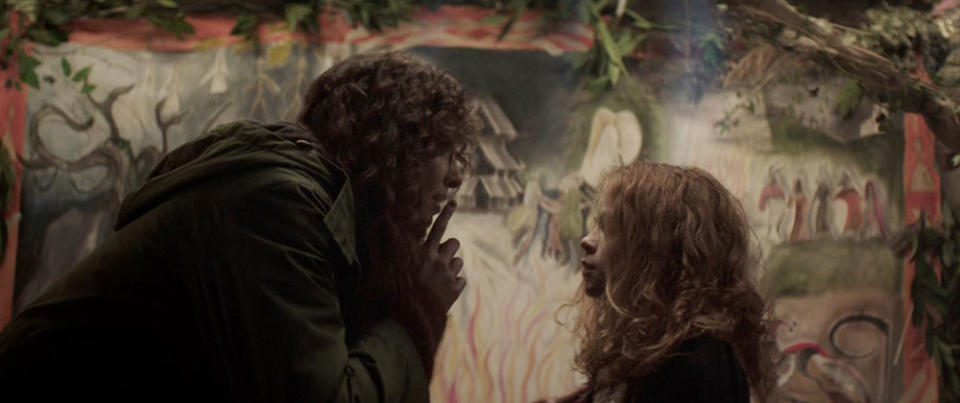
Filmmaking involves a lot of problem solving. What problem worked out for the best in the end?
We had a tiny budget, a tiny shooting schedule [during the tail-end of Covid] and the smallest amount of prep I’ve ever had. I also chose to shoot with one camera, and all of those types of things can be helpful, because everybody knows that there’s an urgency. Shooting with one camera meant that what was happening in camera was all important, and there weren’t going to be a hundred options. And then being able to pull together such a rich look for this movie in such a short amount of time in a foreign country with an all-new cast and crew that I had not worked with was certainly challenging but extremely rewarding. We all just had the best time, and everybody knew their opinion mattered.
In the script. Tom says, “They sing the ‘Hymn of Gallowgog,’” but there was no “Hymn of Gallowgog.” So a lot of the cast was like, “Well, I can’t wait to hear the song.” And I was like, “There isn’t a song yet. I have to figure out the song.” So we were about ready to shoot the first scene where they all start to hum this very scary earworm song, and I didn’t have the song, but I had a lot of references. So I called my mother to give her some lyrics and a melody, and I’m not exactly a musician, but she is. And I was like, “Could you put this together?” So she called me back, and that’s when I had the “Hymn of Gallowgog” on my iPhone. We then showed up on set that Monday, and everybody was like, “Okay, let’s hear the song.” And so I piped her voicemail through and that’s what everybody learned to get the ball rolling. And by the end of the whole process, that song became ingrained, and it became enriched and expanded upon in different ways. But it all started with being forced to come up with a great solution, and it worked out.
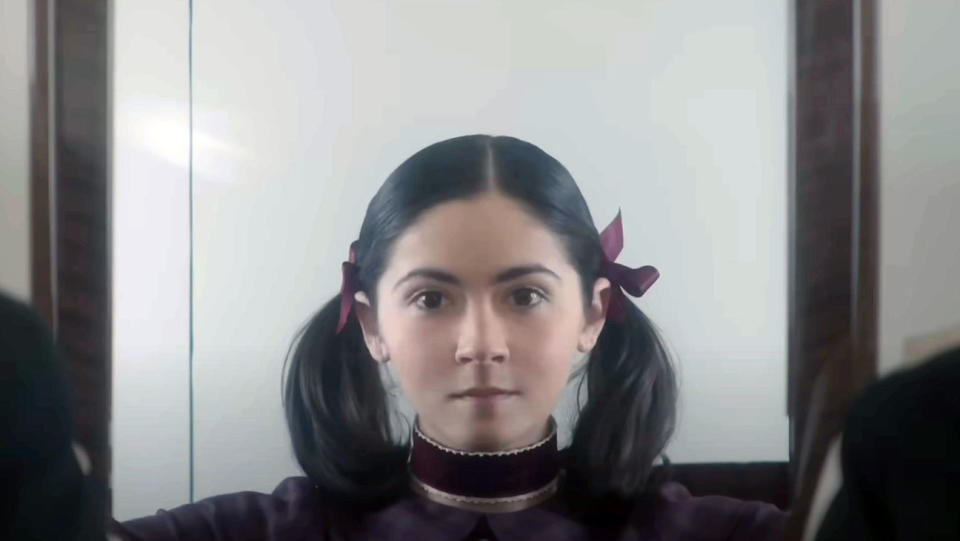
You took a huge creative risk with Orphan: First Kill, as you had a then 23-year-old Isabelle Fuhrman play “nine-year-old” Esther. So, given how much suspension of disbelief was required, is part of you shocked that it was so well received?
I have a certain blind optimism going into my creative ideas if I’m excited about one. When I first read that script, one of my two things was, “Is it going to have a great twist? And if it does, how do you recast that Isabelle Fuhrman?” And it did have that great twist, so I went and I met with Isabelle immediately. She really wanted to play the part, and it wasn’t me trying to talk her into doing something bizarre. She still looks very much like she did as a child, only bigger, whereas I would’ve looked totally different if you compared me at 12 and 24. So I was like, “Wow, this could really work.”
I had done things like that before where I’ve made people bigger when they were smaller. This was just the opposite, and she was so dynamic as an actor. She was able to do a lot of things that a child actor would struggle with. The violent or sensual things would be weird, but Isabelle was an adult now, so she could play around with expectations even more. And so we eventually did some photo tests with her, and then it turned into a camera test with the whole crew and they approved it. And then seeing her on set, walking around with three little mini versions of her, if I found her crying in the corner in between takes, going, “What have I done?” then it was never going to work. But she didn’t have that attitude at all. She believed in it just as much as I did, and that was infectious to the crew. Nobody was going to question it.
But by the time it was released, I took a breath and went, “What if nobody buys it? What if it doesn’t work?” Before that, I showed a rough cut where we had not really spent any time fine tuning how to use her in the movie, but the people who watched that first cut were like, “Within five minutes, I totally forgot.” And that’s the great thing about stories. If you can buy into the story, then you can hopefully get lost in the story. So I was surprised [by the warm reception], because it was such an easy layup way to critique the movie: “Give me a break, she doesn’t look like a little kid.” But if you want to go along for the ride, it’s a fun ride. And I was so pleasantly surprised that audiences pretty much across the board bought into it. We were both happy. We were like, “Oh wow, we could make these movies forever.” And so she could play the part as many times as she wants to, as long as it’s still fun and rewarding.
Yeah, I was going to ask you if there was still some gas left in the franchise’s tank.
I definitely think Orphan as a franchise has so many variations, and unlike other franchises, whether it’s a doll or a masked killer, she’s a real character on screen like Hannibal Lecter and she’s never going to age. So we really can do it, and we’re only going to get better at it. And Isabelle loves it so much. So, as long as we get excited about the stories, there are so many directions to go, and we’re developing a third one now. When I saw the writer [David Coggeshall] at a screening of Lord of Misrule a few weeks ago, we talked about his new movie, The Family Plan, and he said, “I just want to write Orphan movies because there’s such a freedom. You get to kind of do anything.” And now that we’ve gone another direction with the second one, the franchise’s rulebook has been opened up to where anything is possible.
The pressure of topping the first two movies’ twists, is it keeping you up at night?
Absolutely. David Leslie Johnson-McGoldrick, who co-created the first one with Alex Mace, was very much involved in the second one, and he was like, “The Orphan movie is about the twist. That’s what it has to have.” And knowing where we are in the process already, I’m extremely excited about the twists and turns that we have in store.
***
Lord of Misrule is now available in movie theaters and on VOD.
Best of The Hollywood Reporter
Eight Actors Who Have Played Willy Wonka in Films and on Broadway
Martin Scorsese’s 10 Best Movies Ranked, Including 'Killers of the Flower Moon'

